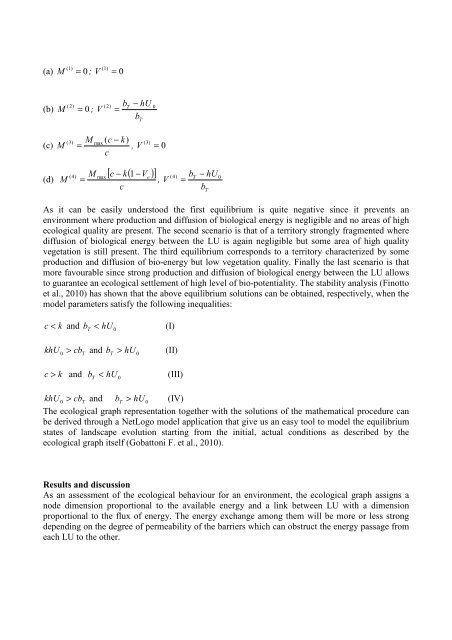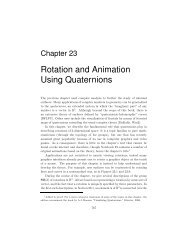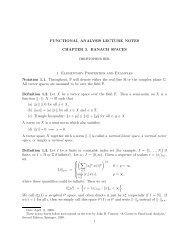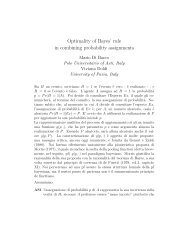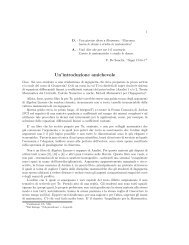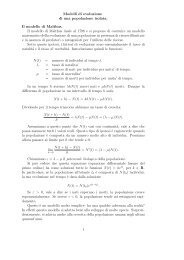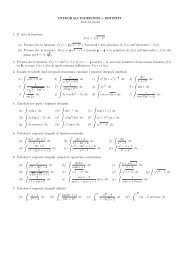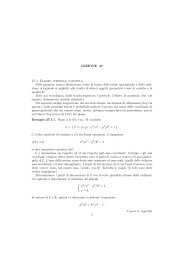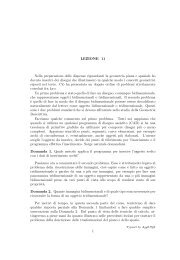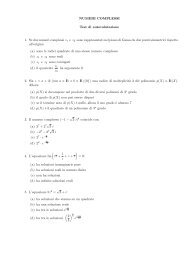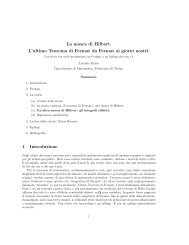j - Dipartimento di Matematica - Politecnico di Torino
j - Dipartimento di Matematica - Politecnico di Torino
j - Dipartimento di Matematica - Politecnico di Torino
You also want an ePaper? Increase the reach of your titles
YUMPU automatically turns print PDFs into web optimized ePapers that Google loves.
(1)<br />
(1)<br />
(a) M = 0 ; V = 0<br />
(2)<br />
(b) M = 0 ;<br />
( 2) bT<br />
− hU<br />
0<br />
V<br />
=<br />
b<br />
T<br />
(c)<br />
(d)<br />
M<br />
M<br />
M<br />
max<br />
( c k)<br />
(3)<br />
= , V = 0<br />
c<br />
( 3) −<br />
(4)<br />
=<br />
M<br />
max<br />
[ c − k( 1 −V<br />
)]<br />
c<br />
e<br />
,<br />
b<br />
=<br />
hU<br />
b<br />
( 4) T<br />
−<br />
0<br />
V<br />
T<br />
As it can be easily understood the first equilibrium is quite negative since it prevents an<br />
environment where production and <strong>di</strong>ffusion of biological energy is negligible and no areas of high<br />
ecological quality are present. The second scenario is that of a territory strongly fragmented where<br />
<strong>di</strong>ffusion of biological energy between the LU is again negligible but some area of high quality<br />
vegetation is still present. The third equilibrium corresponds to a territory characterized by some<br />
production and <strong>di</strong>ffusion of bio-energy but low vegetation quality. Finally the last scenario is that<br />
more favourable since strong production and <strong>di</strong>ffusion of biological energy between the LU allows<br />
to guarantee an ecological settlement of high level of bio-potentiality. The stability analysis (Finotto<br />
et al., 2010) has shown that the above equilibrium solutions can be obtained, respectively, when the<br />
model parameters satisfy the following inequalities:<br />
c < k and b T<br />
< hU<br />
0<br />
(I)<br />
khU<br />
0<br />
> cb T<br />
and b T<br />
> hU<br />
0<br />
(II)<br />
c > k and b T<br />
< hU<br />
0<br />
(III)<br />
khU<br />
0<br />
> cb T<br />
and b T<br />
> hU<br />
0<br />
(IV)<br />
The ecological graph representation together with the solutions of the mathematical procedure can<br />
be derived through a NetLogo model application that give us an easy tool to model the equilibrium<br />
states of landscape evolution starting from the initial, actual con<strong>di</strong>tions as described by the<br />
ecological graph itself (Gobattoni F. et al., 2010).<br />
Results and <strong>di</strong>scussion<br />
As an assessment of the ecological behaviour for an environment, the ecological graph assigns a<br />
node <strong>di</strong>mension proportional to the available energy and a link between LU with a <strong>di</strong>mension<br />
proportional to the flux of energy. The energy exchange among them will be more or less strong<br />
depen<strong>di</strong>ng on the degree of permeability of the barriers which can obstruct the energy passage from<br />
each LU to the other.


